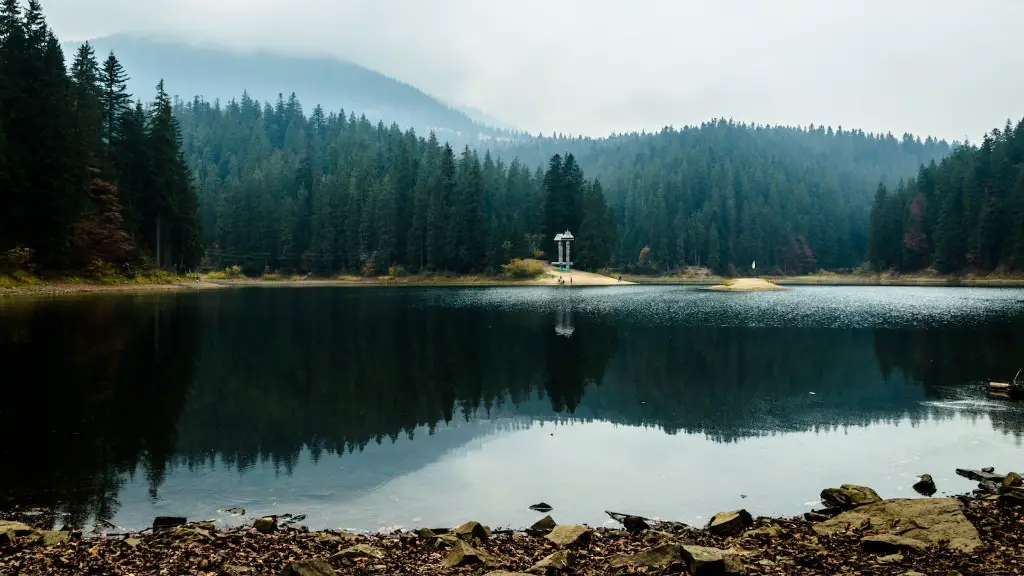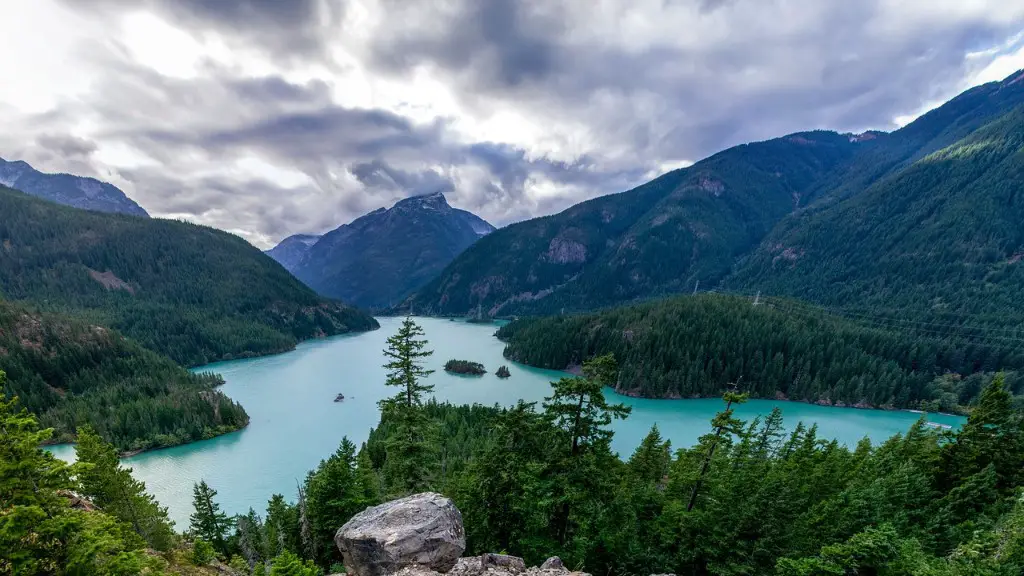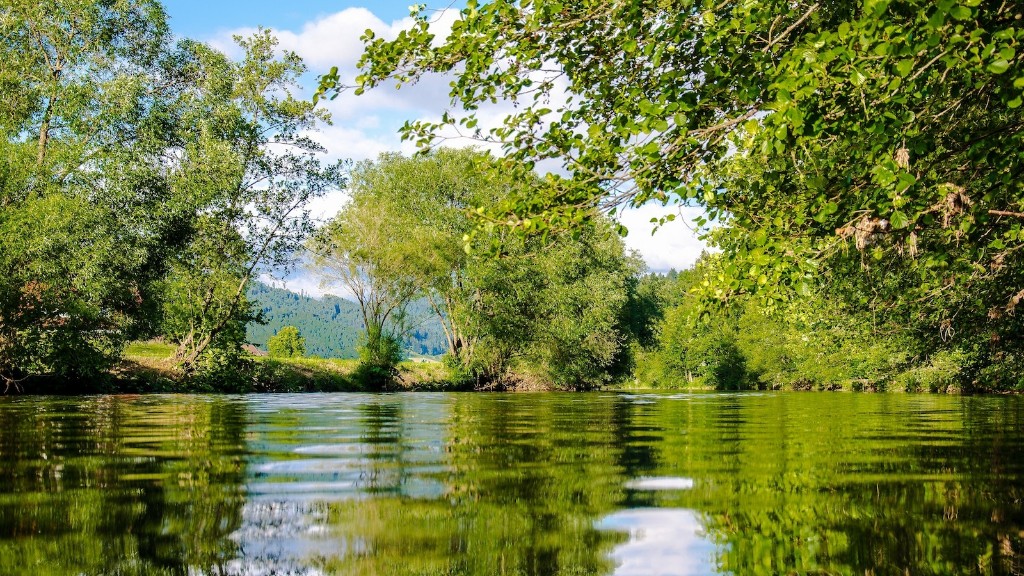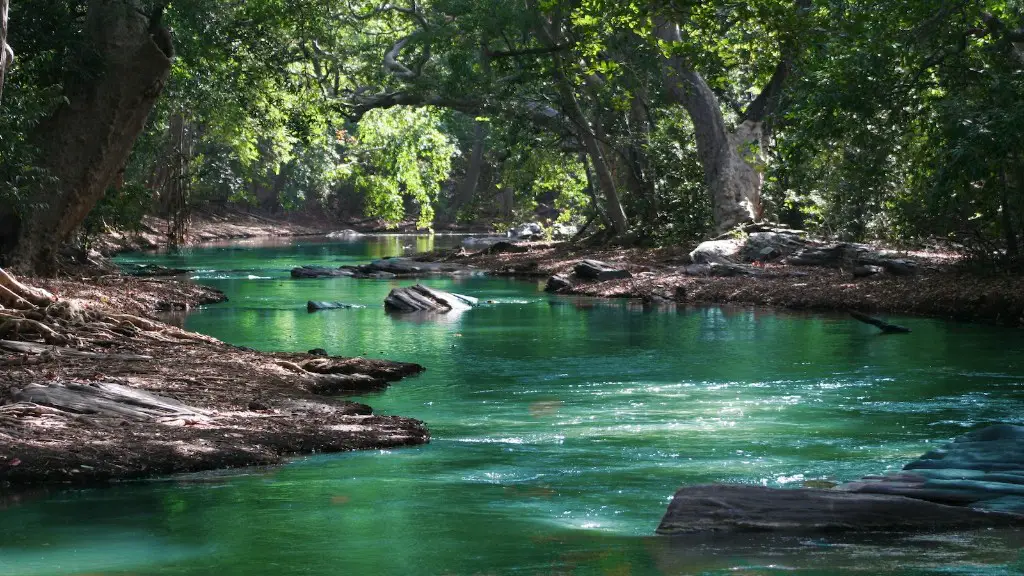Lake Baikal is the deepest and oldest freshwater lake in the world. Its beauty is only surpassed by its vastness and serenity. Being over 25 million years old, the lake is the largest and most ancient body of fresh water in the world. How was this lake formed?
Experts believe that Lake Baikal’s formation began over 25 million years ago with the uplifting of the Eastern Sayan Mountains. Surrounded by rocks and mountains, the lake was formed out of the depression between these mighty mountains. Earthquakes in the area then further sculpted the terrain and caused multiple fissures and depressions, forming deep canyons, coves, and creeks which now make up the lake bed. Over millions of years, the process of erosion and abrasion shaped the shoreline and further shaped the lake’s depths, making it the most voluminous freshwater lake in the world.
The unique characteristics of Lake Baikal are due to a combination of geological features and environmental factors. The basin’s topography is highly varied with large flat areas, valleys, and mountains surrounding the lake. There are also two mountain ranges: the Eastern Sayan mountains and the Baikal Ridge that divide the lake into two parts. Moreover, the lake is also fed by over 340 rivers, as well as 3600 underground streams.
In terms of climate, researchers believe that the formation of Lake Baikal began in a very cold environment. Throughout the years, this climate gradually changed to a milder one. Although the lake regularly freezes over in winter, due to its large volume, the temperature of its deep waters is quite stable and can reach up to 8 degrees celsius in the summer. Unfortunately, the average surface water temperature has recently been increasing due to climate change, making this beautiful landscape more vulnerable.
The uniqueness of Lake Baikal is not only due to its age and size, but also because of its rich biodiversity. Being home to 2,500 endemic species, the lake is one of the world’s biodiversity hotspots. One of the endemic species is the Baikal seal (Phoca sibirica), which lives only in the lake. It is believed that the lake’s unique chemistry and physical environment play an important role in developing and sustaining the unique biodiversity.
The cultural significance of Lake Baikal has also been recognised by UNESCO, who included it in the list of World Heritage Sites in 1996. Its spiritual importance is also deeply rooted in traditions of the indigenous Buryat people who have lived in the area for centuries. The lake is associated with many tales and myths, and is considered to be a magical place by locals, who view it with reverence and awe.
The Ethical Implication of Lake Baikal
Apart from its incredible beauty, Lake Baikal is also important because of the ethical implications behind its preservation and conservation. As mentioned before, climate change, as well as overfishing, poaching and pollution threaten this ancient lake and its biodiversity. This makes it a strong symbol of the worldwide struggle against the pressing threats of climate change and the effects of human activity. Moreover, it serves as a reminder of the need to protect ecosystems and natural habitats, as well as a call for action towards sustainable development.
The plight of Lake Baikal is part of a larger problem that many of the most precious sites around the globe are facing, and stresses our urgent need to act and protect them. This is why preserving Lake Baikal is essential for protecting biodiversity and why its preservation has become a priority for many environmental organisations.
The Impact of Eco-tourism
The lake is also a major destination for ecotourists. Although ecotourism activities on Lake Baikal have the potential to result in positive economic and social impacts, they can also have a negative impact on the lake’s natural resources and ecosystems. Pollution and overcrowding of tourist sites can lead to the destruction of the lake’s biodiversity and disruption of the natural environment.
To prevent these negative impacts, efforts are being made to limit tourist access to the most sensitive areas around the lake. Moreover, eco-tourism initiatives help to raise funds for environmental research, education, and conservation measures. In this way, eco-tourism can serve as an important tool for the preservation of Lake Baikal by raising awareness about its value and by providing funds to protect the lake from further degradation.
Conclusion of the Vulnerability of Lake Baikal
The vulnerable state of Lake Baikal is a reminder of the consequences of human activity on the environment. The lake has faced the destruction of its ecosystems and its biodiversity due to pollution, overfishing, poaching, and climate change. It is therefore essential to take measures to preserve the lake and its unique ecosystems, both locally and globally. Only in this way can Lake Baikal be preserved and its biodiversity saved for future generations.
Why is Lake Baikal so Special?
Lake Baikal is special for many reasons. Firstly, it is the deepest and oldest freshwater lake in the world. It is home to many endemic species, including the Baikal seal, which can only be found in this lake. Secondly, it is surrounded by a unique landscape with a variety of geological features and shapes. Thirdly, it has a cultural and spiritual significance that cannot be underestimated. Finally, its preservation is a reminder of our responsibility to protect our ecosystem and its biodiversity.
Preservation Efforts of Lake Baikal
Preserving Lake Baikal is a must in order to protect its fragile ecosystems, ecosystems and its biodiversity. Various local and international efforts have been put in place to protect the lake, such as limiting access to environmentally sensitive areas, limiting the number of tourists, and providing funds for research, education, and conservation. Moreover, local communities and individuals are also an essential part of the preservation efforts by actively taking steps to protect the lake from further degradation.
Sustainable Development of Lake Baikal
Sustainable development of the Lake Baikal region is key for protecting the lake and its unique resources. This includes measures to reduce pollution, protect wildlife, and preserve habitats. It also includes the creation of green and sustainable infrastructure that takes into account the specific needs of the local population and the lake. In addition, it is important to ensure that local communities living around the lake have access to clean water, energy, and other resources they need. Only in this way can Lake Baikal be preserved and its biodiversity saved.



